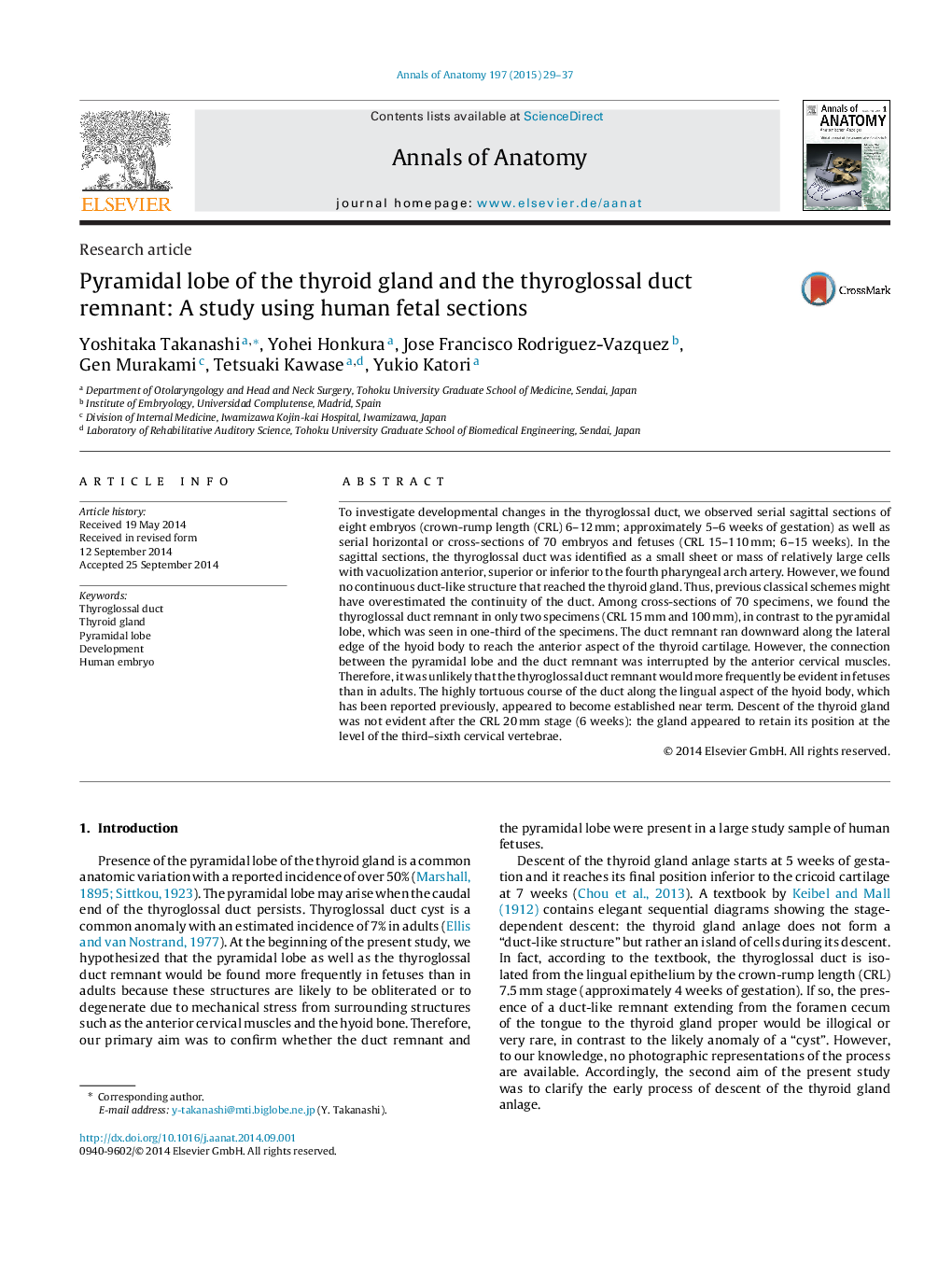| Article ID | Journal | Published Year | Pages | File Type |
|---|---|---|---|---|
| 8461027 | Annals of Anatomy - Anatomischer Anzeiger | 2015 | 9 Pages |
Abstract
To investigate developmental changes in the thyroglossal duct, we observed serial sagittal sections of eight embryos (crown-rump length (CRL) 6-12Â mm; approximately 5-6 weeks of gestation) as well as serial horizontal or cross-sections of 70 embryos and fetuses (CRL 15-110Â mm; 6-15 weeks). In the sagittal sections, the thyroglossal duct was identified as a small sheet or mass of relatively large cells with vacuolization anterior, superior or inferior to the fourth pharyngeal arch artery. However, we found no continuous duct-like structure that reached the thyroid gland. Thus, previous classical schemes might have overestimated the continuity of the duct. Among cross-sections of 70 specimens, we found the thyroglossal duct remnant in only two specimens (CRL 15Â mm and 100Â mm), in contrast to the pyramidal lobe, which was seen in one-third of the specimens. The duct remnant ran downward along the lateral edge of the hyoid body to reach the anterior aspect of the thyroid cartilage. However, the connection between the pyramidal lobe and the duct remnant was interrupted by the anterior cervical muscles. Therefore, it was unlikely that the thyroglossal duct remnant would more frequently be evident in fetuses than in adults. The highly tortuous course of the duct along the lingual aspect of the hyoid body, which has been reported previously, appeared to become established near term. Descent of the thyroid gland was not evident after the CRL 20Â mm stage (6 weeks): the gland appeared to retain its position at the level of the third-sixth cervical vertebrae.
Related Topics
Life Sciences
Biochemistry, Genetics and Molecular Biology
Cell Biology
Authors
Yoshitaka Takanashi, Yohei Honkura, Jose Francisco Rodriguez-Vazquez, Gen Murakami, Tetsuaki Kawase, Yukio Katori,
